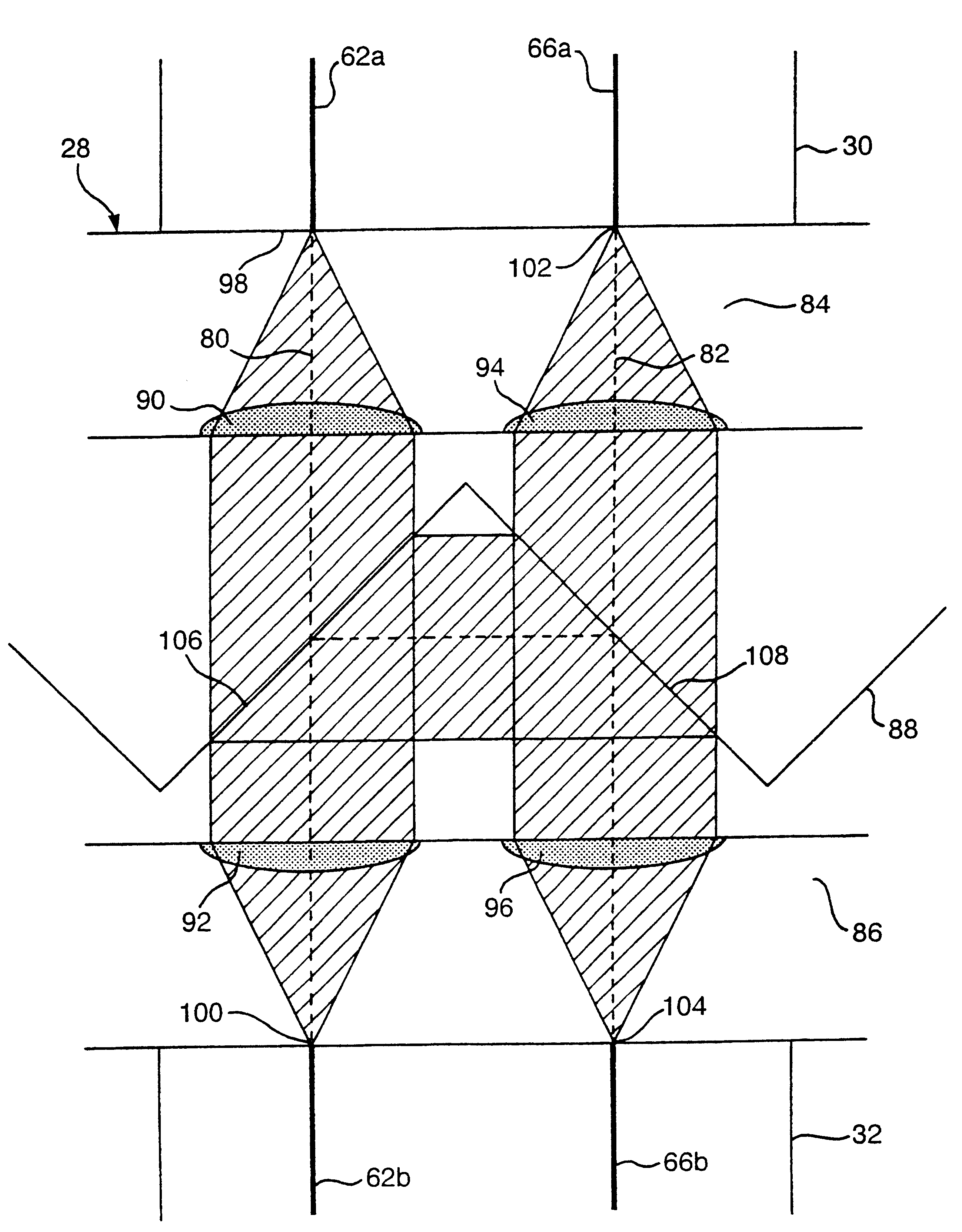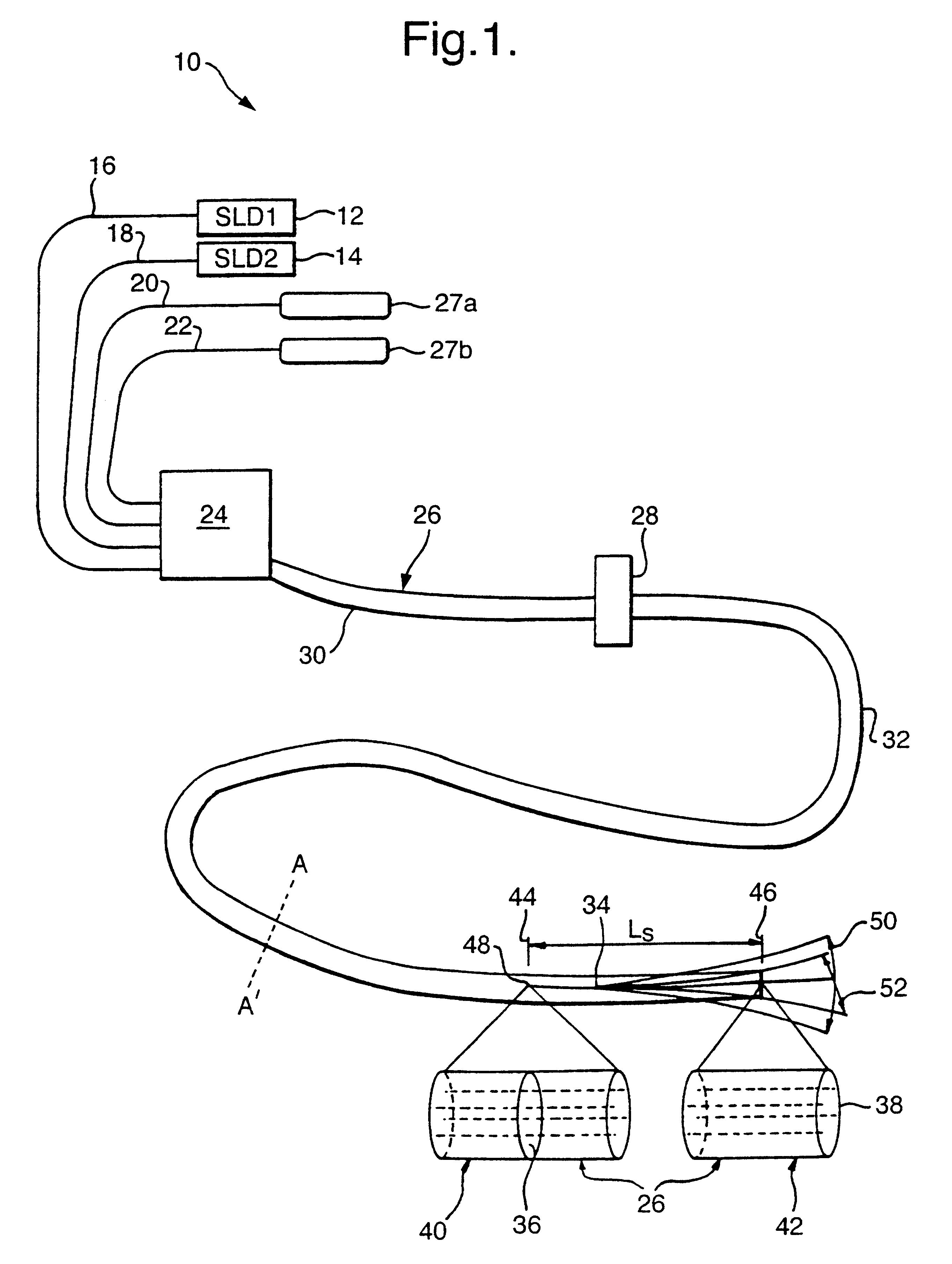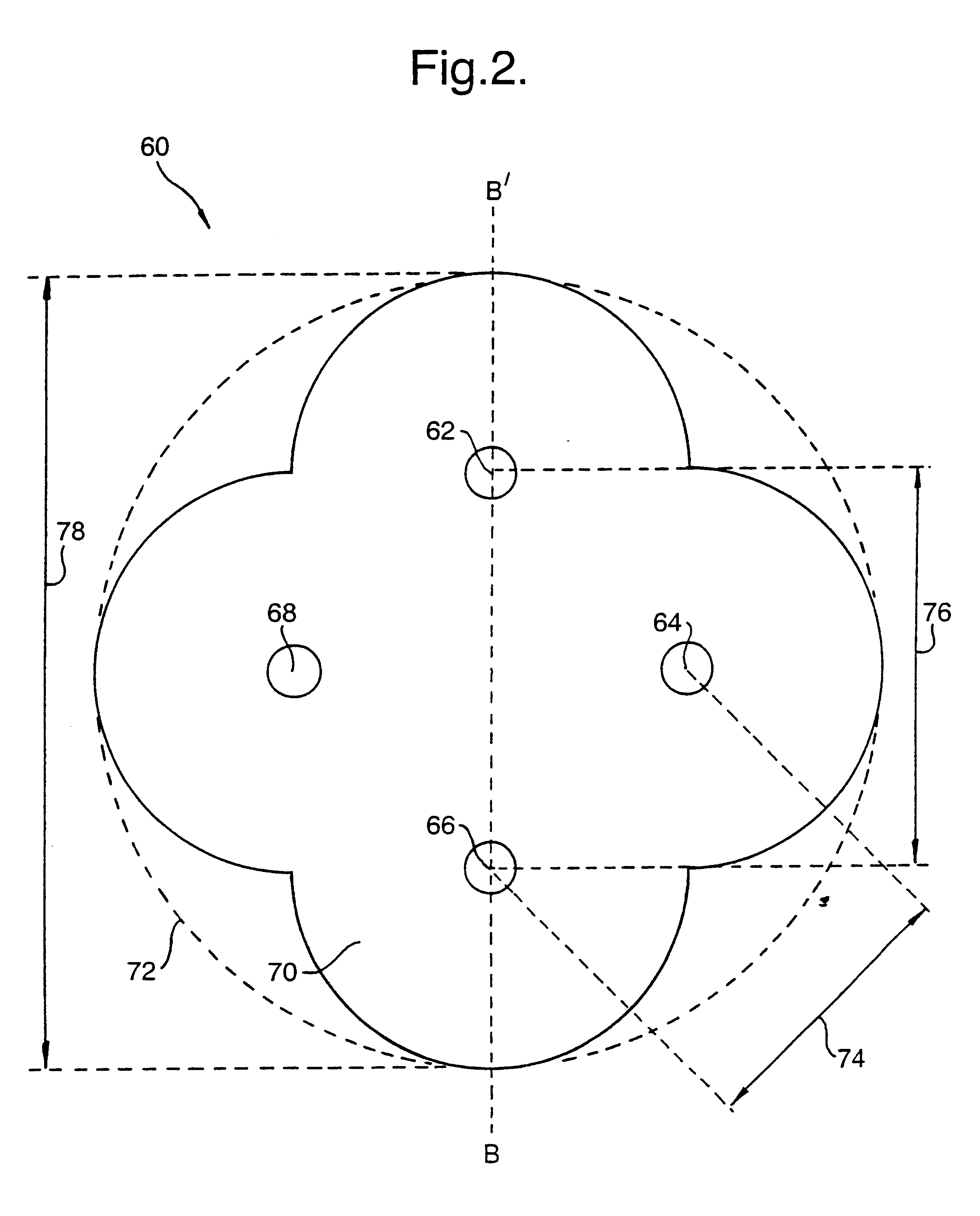Optical fibre bend sensor
a technology of optical fibre and bend sensor, which is applied in the direction of optical elements, optical apparatus testing, instruments, etc., can solve the problems of bending of the fibre, weakening the structure being monitored, and strain developing within the fibr
- Summary
- Abstract
- Description
- Claims
- Application Information
AI Technical Summary
Benefits of technology
Problems solved by technology
Method used
Image
Examples
Embodiment Construction
With reference to FIG. 1, an optical fibre bend sensor of the invention for making vector strain measurements is illustrated generally by 10. The sensor 10 incorporates a pair of fibre pigtailed superluminescent diodes 12, 14 connected to a respective pair of input monomode optical fibres 16, 18. Superluminescent diodes (SLDs) are particularly intense sources of broadband radiation. Suitable diodes 12, 14 for use in this invention are supplied by Superlum Ltd., SLD-361 / A-TO-SM, with wavelength range centred at 825 nm and FWHM bandwidth of 18 nm. The input monomode fibres 16, 18 and two output monomode fibres 20, 22 are connected via a fan-out connector 24 to respective cores of a 4-core Bunched Multiple Monomode (BMM) fibre assembly 26. Each output monomode fibre 20, 22 is also connected at its opposite end to a fibre optic linked spectrometer 27a, 27b. Both fan-out connectors and BMM fibres are known and described in Opto and Laser Europe, issue 23, p29 (September 1995). The BMM fi...
PUM
 Login to View More
Login to View More Abstract
Description
Claims
Application Information
 Login to View More
Login to View More - R&D
- Intellectual Property
- Life Sciences
- Materials
- Tech Scout
- Unparalleled Data Quality
- Higher Quality Content
- 60% Fewer Hallucinations
Browse by: Latest US Patents, China's latest patents, Technical Efficacy Thesaurus, Application Domain, Technology Topic, Popular Technical Reports.
© 2025 PatSnap. All rights reserved.Legal|Privacy policy|Modern Slavery Act Transparency Statement|Sitemap|About US| Contact US: help@patsnap.com



